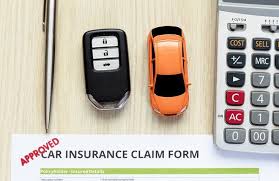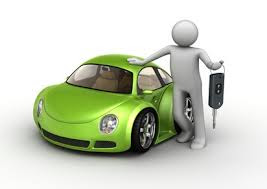4 tips for using electronic evidence of insurance during traffic stops
Now that evidence of electronic insurance is accepted in most states, the fear of digging through your glove box for insurance cards recently is largely a thing of the past.
John Espenschied from Insurance Brokers Group at St. Louis said most insurance operators have participated in digital bandwagon and have given their customers the ability to withdraw insurance cards on smartphones.
"Your insurance card is now accessible like a smartphone in your hand," said Espenschied. "The possibility is, if you go to the app store on your smartphone, you will find the application of your insurance company."
This application often allows you to make payments, submit and track claims, and keep a copy of your car insurance proof.
This means you have to download your insurance company application and create an account to have access to your insurance card by telephone. You also most likely have to enter the application every time a police officer stops you.
ALSO: Are Car Features Too Disturbing?
Just because most insurance companies offer proof of electronic insurance does not mean that police officers in all states will accept it.
Korey Adekoya, business development manager at Shabana Motors in Houston, said that in 2017 only Connecticut, New Mexico and Washington, D.C., needed the driver to show physical proof of insurance. This means that motorists who pull over in these countries cannot simply withdraw proof of insurance on their smart phones.
So, if you plan to drive through parts of the country have access to your actual proof of insurance paper copy.
"If you are in a condition that has not legalized it, you may be responsible for fines and fees," Adekoya said.
Jayson Greene, insurance agent with Carolina Insurance Professionals in Raleigh, North Carolina, said that it became much more common for motorists to rely on proof of electronic insurance when they pulled over to stop traffic.
But that does not mean that drivers also cannot keep a physical copy of their insurance card to make a backup.
"One trap could be an attractive officer. You might not be aware of the law - this would apply to countries that have just passed the law - if your smartphone dies," Greene said.
ALSO: What's New in Cars for 2018?
However, most officers already know that digital proof of insurance is now acceptable. Kent Unruh, owner of Unruh Insurance Co. in Denver and East Earl, Pennsylvania, said he expects more motorists and police officers to receive proof of electronic insurance.
"In the 21st century, everything is digital," Unruh said. "Proof of insurance is no exception."
However, it helps to find out the right and wrong ways to prove you have car insurance. Try following these tips:
1. Don't be confrontational
Although most states permit proof of electronic insurance, some police officers may not be familiar with the law. This is relatively new in some states. Do not expect officers to attract you to become an expert. Describe your position politely.
If the clerk disagrees, just take a ticket or warning. You'd better submit a case in a traffic court rather than going up to a confrontation with the clerk.
2. Explain in advance your insurance card is on your smartphone
Pulling aside a car driver can also cause anxiety for officers. If the clerk asks for proof of insurance, explain that you must access it on your cellphone before reaching for your device.
3. Showing proof of insurance not agreeing to search for a smartphone
Keep your phone in your hand when showing proof of insurance to your officer. However, if he insists on taking your phone, then allow him to only see policy information.
Legally, an officer cannot search your cellphone without your warrant or approval. Explain that just because your proof of insurance is on your phone does not mean you give permission to look for a telephone.
4. Make sure your documentation looks official
Most state laws are not clear as to what electronic evidence is









